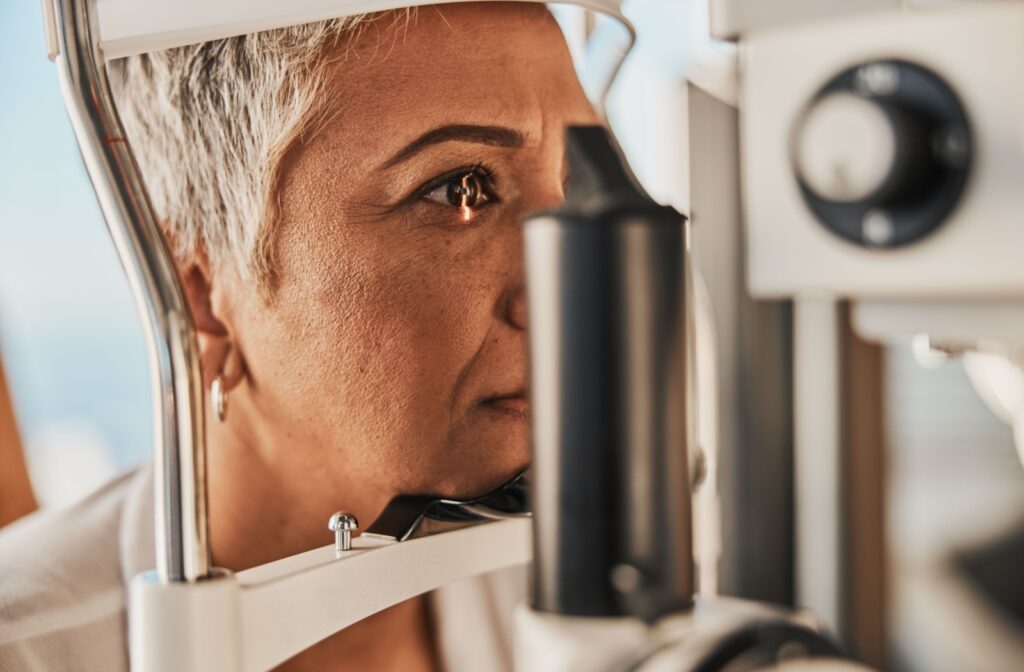When the crisp clarity of a printed page or the vibrant colors of a sunset begin to blur and fade, it might be the first whisper of one of the most common eye conditions affecting the adult population—cataracts. These visual changes can be unsettling, but understanding cataracts can empower you to seek timely treatment and possibly slow progression.
The first signs of cataracts are blurry vision and colors appearing faded or dull.
Eye nutrition and natural and clinical treatments can help you see clearly again.
What Are Cataracts?
Cataracts are an eye condition that gradually develops as we age. They occur when the lens within the eye—a clear, biconvex structure that focuses light on the retina—starts to become cloudy. This clouding interferes with the lens’s ability to transmit clear images to the retina, leading to blurred and impaired vision.
Formation Of Cataracts
The eye’s lens, primarily made up of water and proteins, can become less transparent when proteins break down and clump together. Several factors contribute to this degenerative process, including:
- Aging
- Genetic predispositions
- Excessive exposure to UV light
- Underlying medical conditions like diabetes
- Smoking habits
- Long-term steroid use
- Eye injuries
3 Signs Of Cataracts
- The initial symptoms of cataracts might be so mild that they’re hardly noticeable, but they can progress with time. Individuals may experience blurry vision that’s been likened to looking through a frosty or fogged-up window.
- Additionally, there’s often sensitivity to light, where lamps, sunlight, or headlights seem excessively bright or glaring.
- Night vision can deteriorate, making driving after dusk challenging. Halos might appear around lights, and colors may not seem as vivid as they once did. These visual impairments typically prompt individuals to seek medical advice.
Natural Remedies For Cataracts
While no definitive natural remedy can reverse cataracts, specific tactics might slow their progression. Eating a diet rich in antioxidants—like vitamins C and E—can help maintain eye health.
Wearing sunglasses to protect your eyes from harmful UV rays and not smoking are also preventive measures. Although these practices cannot guarantee cataract prevention, they contribute to overall eye health and may delay onset or progression.
Supplements & Herbal Remedies
In addition to lifestyle changes, several natural remedies may help improve vision and alleviate symptoms associated with cataracts, like bilberry extract, which has been shown to have antioxidant and anti-inflammatory properties.
Another commonly used natural remedy is ginkgo biloba, which has been known to improve blood flow and potentially slow down the progression of cataracts.
It’s important to consult with a healthcare professional before taking any supplements or herbal remedies.
Eye Exercises For Cataract Prevention
Regular eye exercises can also be beneficial in maintaining your eye health and improving vision. These exercises can include:
- Focusing on distant objects
- Blinking frequently
- Rotating your eyes in different directions
By regularly exercising your eyes, you can strengthen the muscles responsible for clear vision and reduce eye strain.
Maintaining A Healthy Lifestyle
It’s important to maintain a healthy lifestyle to support overall eye health. This includes eating a balanced diet rich in fruits and vegetables, getting enough sleep, and avoiding prolonged screen time. Staying hydrated by drinking plenty of water can also help keep your eyes lubricated and reduce dryness.
Regular Eye Exams
If you are experiencing issues with your eyesight or have a family history of eye diseases, it is crucial to schedule regular checkups with your eye doctor. They can detect potential problems early and provide treatment options that are specific to your needs.
Mitigating Cataracts Symptoms
Beyond natural remedies, specific adjustments can mitigate some symptoms of cataracts. For example:
- Anti-glare glasses can reduce glare from bright lights
- Robust lighting at home and in your office can assist with reading and detailed work
- Magnifying glasses can help you see fine details when reading or doing projects
These measures don’t treat cataracts, but they can improve day-to-day living for those already affected.
What Is Cataract Surgery?
Cataract surgery fixes blurry vision caused by cataracts by replacing the eye’s cloudy cataract lens with a clear artificial one. This quick, outpatient procedure has a high success rate and usually allows patients to go home the same day, with most people seeing improvement within days.
Recovery from cataract surgery can take up to a month, with some precautions needed to avoid straining the eyes.
This surgery is suitable for adults whose daily life is hindered by cataracts, regardless of how long they’ve had the condition.

When To See Your Eye Doctor
If you’ve noticed any changes in your vision or you want more information, visit Dr. Jennifer L. Shane & Associates to learn about advances in cataract treatment and to find a treatment strategy that’s right for your vision health.Book an appointment with Dr. Jennifer L. Shane & Associates and we can work together to prevent, manage, and treat cataracts.



